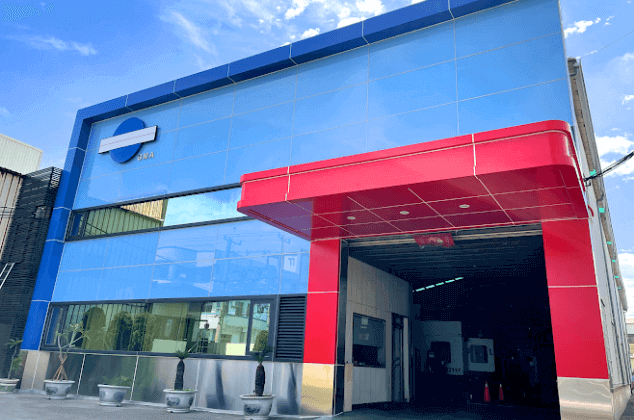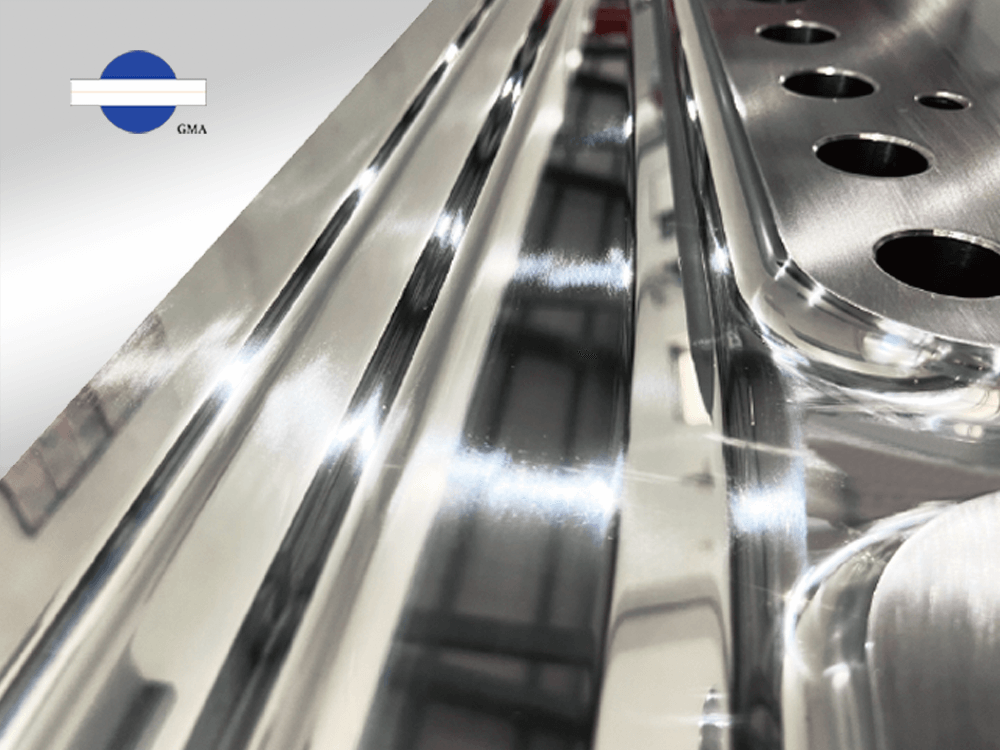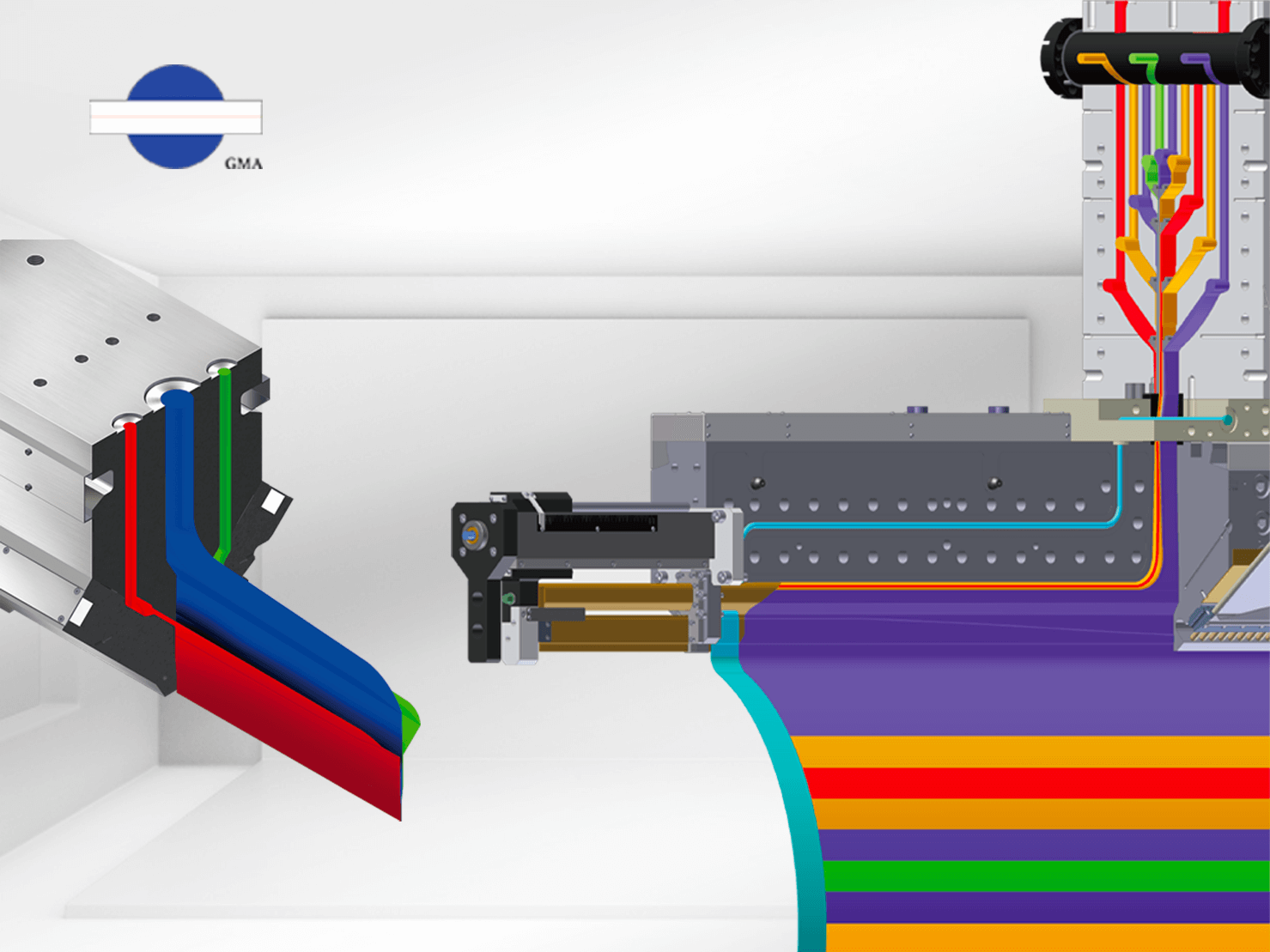Global Technological Innovations in Packaging Materials: The Applications of Film Dies and Lamination Dies
2025.03.31According to surveys and statistics, the global packaging market is growing at an average rate of 3–4% per year. By 2026, the global market size is expected to exceed 1.2 trillion. Packaging materials are used in many different industries. In simple terms, the film and lamination processes—closely tied to the enormous packaging materials market—have become the two most promising and dynamic processes in various plastic production lines. The equipment related to these processes is constantly being updated to meet production demands, with the most common change being the shift from single-layer structures to multi-layer products.
 Packaging materials have a wide range of
applications, and the market size is steadily growing.
Packaging materials have a wide range of
applications, and the market size is steadily growing.
In terms of the lamination process, early lamination mostly involved applying PE onto paper or film for various types of containers. However, due to practical usage requirements, the barrier performance of a single layer became insufficient, leading to the development of two- or three-layer structures. In addition to its predominant application in various food packaging, lamination processes are also frequently seen in certain textile applications, such as waterproof layers for clothing and non-woven fabrics.
 Lamination dies
are used in various food packaging material processes.
Lamination dies
are used in various food packaging material processes.
Compared to lamination, films are much more complex, ranging from two-layer structures to hundreds of layers. Film processes sometimes need to consider secondary processing requirements such as longitudinal stretching, biaxial stretching, and shrinkage, resulting in higher demands for process complexity and precision.

Due to the complexity of film processing, film dies must maintain a high level of precision in both design and manufacturing.
To meet the demand for multi-layer structures, feed block is usually used in conjunction with an extrusion die for production. This equipment combination is the most common in lamination production lines because the multi-layer laminates typically use plastics with similar properties. The use of feed block enables precise layer control and adjustment, which is sufficient to meet production requirements. However, lamination production lines also sometimes employ multi manifold dies, primarily to achieve the specific material property requirements for the lamination layer. In these cases, plastics with significantly different physical properties—or those produced under high and low temperature differentials—are used.
 Feed block paired with lamination dies is the most common configuration
used for the production of multi-layer lamination structures.
Feed block paired with lamination dies is the most common configuration
used for the production of multi-layer lamination structures.
Read more:Unlocking the Three Secrets of Co-Extrusion Feed block
As mentioned earlier, due to the high complexity of film processing, early production predominantly relied on feed block paired with film dies. Over time, the industry shifted toward multi manifold dies as the mainstream solution. This is mainly because multi manifold dies allow each cavity to independently adjust both the thickness and temperature. Additionally, the key difference between films and lamination is that the thickness range required for lamination is typically fixed—eliminating the need for frequent adjustments of the lip opening—whereas film production demands a wider range of thickness adjustments, making the design that permits independent thickness control much more suitable for actual production requirements.
 Multi manifold
dies, with designs that allow independent adjustment of thickness and
temperature, best meet the production requirements for films.
Multi manifold
dies, with designs that allow independent adjustment of thickness and
temperature, best meet the production requirements for films.
Read more:Innovation in Co-Extrusion Process: Multi Manifold Die
Multi-layer structures in lamination and films are primarily applied in the following industrial sectors:
Food Packaging — Mainly for Freshness and Safety
Films commonly used in food packaging include PP (polypropylene) and PE (polyethylene) films, which serve to block air, water, and various microorganisms in the environment, thereby ensuring that food remains uncontaminated and its shelf life is extended. Another type of food-related packaging—for example, lunch boxes, disposable cups, or the packaging paper used by fast food outlets—features a very thin layer of PE applied to the side that contacts the food, which acts as an oil and moisture barrier. In many snack and beverage packages, aluminum foil is laminated with PE as the primary barrier material.
With increasing environmental awareness, many advocate for the use of biodegradable materials in food containers. For instance, a globally renowned coffee chain uses PLC for its cold drink cups.
 In food
applications, both lamination and film are primarily used to provide barrier
properties and ensure preservation.
In food
applications, both lamination and film are primarily used to provide barrier
properties and ensure preservation.
Consumer Packaging – Personalized Packaging and Brand Marketing
Various flexible packaging films are widely used in cosmetics, snacks, and beverage packaging. These films employ multi-layer structures where the inner layer, which comes in contact with the product, must offer moisture resistance and barrier properties, while the outer layer is designed to attract consumers' attention and can be printed with branding or various design patterns.
Pharmaceutical and Medical Packaging – Primarily Focused on Safety and Sterility
Similarly, films with barrier properties used in pharmaceuticals are subject to much stricter requirements than those used for food-grade applications. Not only do they require high standards in processing and production environments, but they also have special requirements during transportation. For safety, the outer packaging of pharmaceutical or medical products must include printed product names or barcodes for clear identification.
 For general
consumer or pharmaceutical packaging, multi-layer lamination or film processes
are typically employed due to the different functions of the inner and outer
layers.
For general
consumer or pharmaceutical packaging, multi-layer lamination or film processes
are typically employed due to the different functions of the inner and outer
layers.
Industrial, Electronic Products, and Logistics Packaging – With Special Material Requirements
Industrial or logistics packaging films often require high toughness and extensibility to prevent tearing or damage during use. Many electronic components are extremely delicate, so a large amount of protective film (release liner) is used to prevent damage or contamination before assembly. Additionally, a type of high-transparency optical film is employed in various electronic products. Optical films are used in displays, touch panels, and similar applications, providing functionalities such as enhancing brightness, reducing glare and reflections, UV resistance, blue light filtering, and adjusting spectral distribution for uniform color. The manufacturing process for these optical films is more complex than that of standard films.
 The manufacturing
process of optical films is even more complex than that of standard films.
The manufacturing
process of optical films is even more complex than that of standard films.
Read
more:Simple but not
simple- Extrusion die for CPP film
Another upgrade in lamination and film equipment is the automation adjustment—i.e., installing auto-dies on the production line. Although the investment cost of auto-dies is much higher than that of manual dies, from a production cost control perspective, auto-dies offer more stable cost-effectiveness over the long term. This is mainly because, when combined with an in-line thickness gauge system, auto-dies can adjust the process in real time if the thickness deviates beyond the allowable tolerance, thereby reducing the wastage rate of non-conforming products. This approach is particularly effective for film products, as the use of automatic dies can significantly lower waste.
 The adoption of
auto-dies will gradually become widespread, greatly benefiting cost control and
the maintenance of consistent product quality.
The adoption of
auto-dies will gradually become widespread, greatly benefiting cost control and
the maintenance of consistent product quality.
Read more:From Manual Adjustments to Automated Dies: Solving Precision and Waste
In summary, the global packaging market is advancing steadily into the future, and both film and lamination processes have become critical technological pillars driving innovation and upgrades in packaging materials.
From single-layer structures to multi-layer composite designs, whether using feed block with dies or multi manifold dies, these processes can produce products that meet diverse application needs—ranging from food safety and consumer product aesthetics to medical packaging—while continuously evolving to address environmental and cost control challenges.
As the adoption and upgrade of auto-dies become increasingly widespread, the production of packaging materials will become more precise and efficient, further enhancing product quality and added value. In the face of enormous market prospects, selecting the core extrusion dies that best suit your production line is key to gaining a competitive edge and embracing broader development opportunities.








